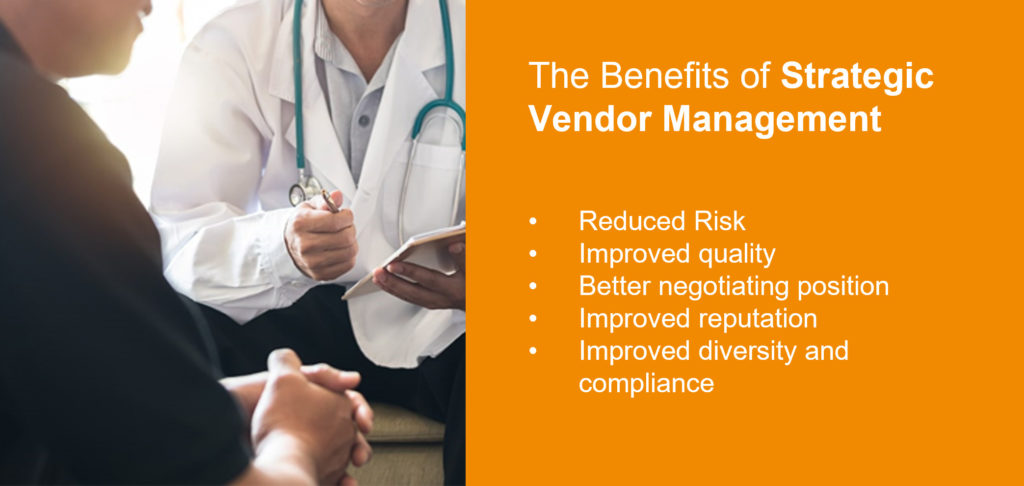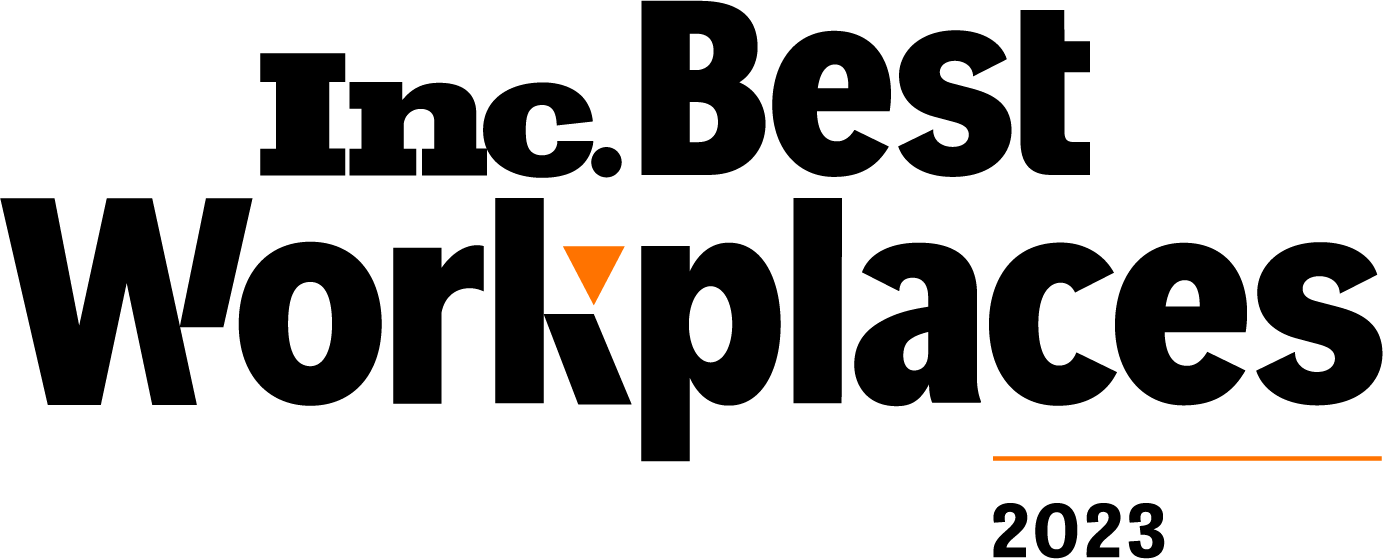
Benefits of Vendor Management & How to Improve the Process
Jump to:
- What is Vendor Management in Healthcare?
- The Benefits of Strategic Vendor Management
- How to Improve the Vendor Management Process in Healthcare
The companies or individuals that provide your healthcare organization with services, technologies and other goods are its vendors. Healthcare providers rely on vendors to provide services, technologies and goods so they can grow and scale their businesses and provide excellent service or care to consumers. For example, health plans may leverage vendors to assist with administration of Health Risk Assessments or utilize vendor outsourcing arrangements to efficiently scale their sales contact center on a seasonal basis. Without vendors, healthcare organizations face costly decisions to build capabilities outside of their core competencies and risk continued investments to keep capabilities up-to-date and compliant with changes in regulatory requirements.
The vendors your healthcare organization chooses significantly impacts the quality of care and service that you can offer. The right healthcare vendors also help save your organization money, enable you to grow and allow you to maintain compliance. Learn more about the importance of vendor management and what your healthcare organization can do to improve it.
What is Vendor Management in Healthcare?
Vendor is a broad term for the entity in the supply chain that sells a product or service directly to a user. In healthcare, the user is the health plan, hospital system, medical practice or another healthcare organization. Healthcare vendors can include any of the following:
- Software vendors including EHR or ERP systems
- Functional or process outsourcing such as contact center
- Professional consulting services
- Health risk assessment vendors
- Staffing services
- Accounting services
When a healthcare organization chooses the vendors it wants to work with, it needs to consider the potential cost of the relationship and any compliance issues with the vendor. If your organization participates in Medicare or Medicaid, the vendors you choose can’t be on the Office of the Inspector General’s exclusion list.
Vendor management is the process of controlling costs and minimizing risks to your organization. It also helps you maximize value from the companies you choose to work with and potentially improves the service you get.
Usually, vendor management is a multi-stage process.
- Discovery and selection: The first step is to research your vendor options and choose potential companies to work with. A request for proposals is typically part of this process.
- Negotiation: The next stage is to negotiate and build relationships with the desired vendors to come to an agreement that benefits both parties.
- Implementation: During implementation, your organization starts to work with the vendor. At this stage, you can evaluate whether the services or products benefit your organization or if working with them creates more challenges. Also in this phase, you need to ensure your vendors comply with HIPAA or HITECH regulations.
- Assessment: After working with the vendor for a while, it’s critical to evaluate the relationship. Look at how the vendor performs, how much your organization spends and other factors to determine if the partnership helps you reach your goals or costs more than you anticipated. At this point, you might try to renegotiate with the vendor if things aren’t working out, or part ways with one vendor and continue to work with another.
The Benefits of Strategic Vendor Management

There are many advantages of developing a vendor management strategy for your healthcare organization.
- Reduced risk: A vendor management strategy reduces risk to your organization and the consumers you serve. For example, it can help you steer clear of vendors on the excluded list. It also helps you avoid companies that may underperform and provides you with a cushion if one vendor closes or has supply chain issues.
- Improved quality: Vendor management can help your organization select specialized and best-in-class vendors who improve the quality and consumer experience that your organization provides. Having a vendor management plan in place also streamlines the process of dealing with vendors, so your teams can focus on your organization’s core competencies and strategic goals.
- Better negotiating position: Vendor management gives your organization leverage. After years of working with Vendor A, you might receive a considerably more cost-effective proposal from Vendor B, but you’ve spent time nurturing a relationship with Vendor A and want to maintain it. With a management system in place, you have the option of going to Vendor A and negotiating with them to get a better price. The vendor gets to keep your business, and you can save money.
- Improved reputation: Vendor management enhances or preserves your organization’s reputation. You don’t want people to think of you as the hospital that pays late or the medical practice that abruptly stops working with vendors. You can keep a positive relationship with everyone when you know who you’re working with, when invoices will arrive and when they’ll be due.
- Improved diversity and compliance: Vendor management can help your organization to set and execute a strategy to work with Small and Diverse Businesses (SDBs), which provides important support to SDB organizations. Supplier diversity programs also drive and monitor compliance with SDB spend that may be required under selected government contracts.
How to Improve the Vendor Management Process in Healthcare
Establishing a set of vendor management best practices can help improve the process at your organization. One best practice to follow is to use a centralized model. Healthcare organizations may take a siloed approach to vendor management, leaving each department responsible for separate vendors. That can lead to missed opportunities, such as savings and can also lead to duplication.
Developing a centralized model integrates your vendors into your organization and gives you a reliable way to track performance. A centralized approach also makes it easier to remain in compliance with regulations.
Continuous monitoring of vendors should also be part of the vendor management process. A vendor-organization relationship that starts well could end up on shaky ground for various reasons. A vendor might struggle to send timely shipments or change manufacturers, resulting in a lower-quality product. Keeping tabs on your vendors allows you to adjust as needed to maintain your organization’s reputation and continue providing the best care possible.

ProspHire Can Help Your Organization Develop a Centralized Vendor Management Office
ProspHire wrote the playbook on using a centralized vendor management office, and we can help your organization do the same. To learn more about our approach and how we can help you develop a winning vendor management strategy, contact us below.
Let’s have a conversation
ProspHire
216 Blvd of the Allies, Sixth Floor
Pittsburgh, PA 15222
412.391.1100
[email protected]


© 2024 ProspHire, LLC. All Rights Reserved / Terms of Use / Privacy Policy







